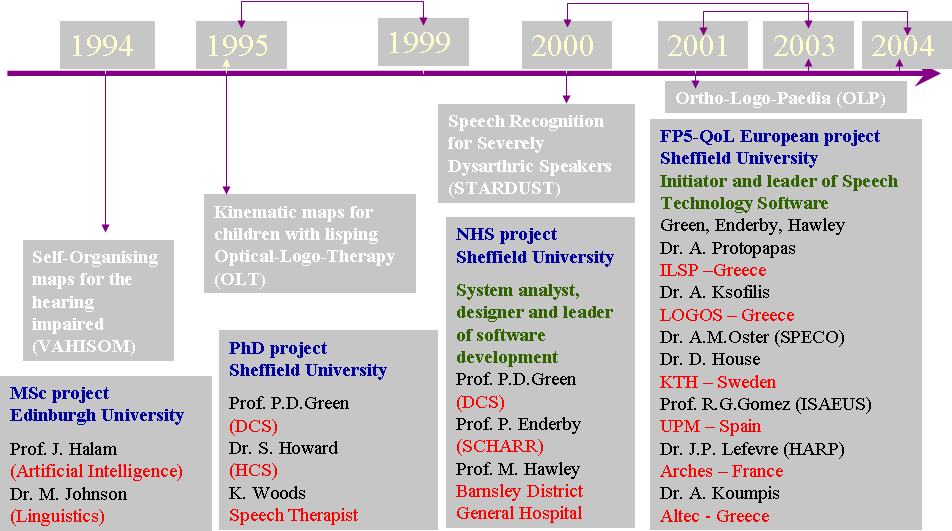Two funded research projects: OLP FP5-Quality of Life 2.67M€ EC project and STARDUST NHS-NEAT 275K€ UK project were based on Athanassios’ Optical Logo-Therapy, PhD thesis.

Past Research Projects 1994-2004
This is a review of the software STAPTK that was developed for the STARDUST project.
STAPTK in STARDUST
STARDUST NHS project (2000-2003) integrates computer based visual-feedback for speech training to assist dysarthric speakers to improve the consistency of their utterances, and speech recognition of commands in sequence to control an environmental device.
In an attempt to reduce speech production inconsistency and hence enhance the success of voice-driven assistive technology, the ASR component in STAPTk is closely coupled with therapy - Eurospeech 2003, Phil Green et al.
STARDUST Aims
- Provide visual training aids to help improve consistency and/or intelligibility of severely dysarthric speakers
- Use training sessions to procude data for ASR
- Build small vocabulary recognisers for dysarthric clients
- Use the recognisers in assistive technology
Dysarthric ASR Problems
- Small training corpus
- Large deviance from normal
- Fluency problems
- Limited phonetic contrast
- Inconsistent production
STARDUST Demonstration
-
Command Sequence
-
Consistency Training
Eurospeech 2003 Presentation
Eurospeech 2003 – Automatic Speech Recognition with Sparse Training Data for Dysarthric Speakers (ppsx)
